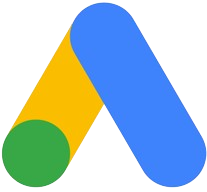Digital Marketing Channel Descriptions

Facebook Ads
Facebook is a highly effective platform for awareness and for engaging users who are in a social, interactive mindset. Ads are seamlessly integrated into users’ news feeds as they browse on various devices, making it an ideal channel for both awareness and engagement through likes, shares, and other forms of interaction.
With 3.1 million active Facebook users in Quebec as of June 2024, the platform offers robust targeting capabilities. We will leverage Facebook’s detailed audience segmentation to include or exclude users based on factors such as location, gender, age, interests, and behaviors.
To maximize performance, we will create separate ad sets, allowing us to track, test, and refine results as the campaign progresses. Optimization data will guide ongoing adjustments, improving audience targeting and ensuring the most effective ads are prioritized.

Instagram Ads
Instagram ads are managed through the same platform as Facebook ads, offering the same advanced targeting options. The key advantage of Instagram is its ability to reach younger audiences who may not be as active on Facebook.
As a leading platform for brands worldwide, Instagram is ideal for promoting visually-driven campaigns that resonate with users in a concise, engaging format. In addition to being cost-effective, Instagram ads allow us to deliver impactful messages that capture attention quickly.
It’s important to note that Instagram’s audience is more mobile-centric, with higher engagement through likes and shares but fewer direct clicks. Our strategy will account for this by creating compelling, shareable content that encourages engagement and supports brand awareness, while still guiding users toward tourism opportunities.

Google Ads
Google Ads enables advanced targeting using topics, in-market segments, and affinity interests. Data on users’ interactions with ads, including device types and locations, is analyzed in real-time to enhance targeting and improve ad performance. In addition, we use basic audience demographics, such as gender, location, and age for targeting. Google’s machine learning algorithms and manual analysis work together to refine campaigns. Negative websites, keywords, and irrelevant audiences are identified and excluded throughout the campaign lifecycle to focus on valuable prospects.
Google Display Ads
The Google Display Network (GDN) reached 90% of online consumers in 2022, offering powerful targeting options to deliver ads at the right place and time. Through the GDN, users will encounter your ads while browsing relevant websites and mobile apps, raising awareness for your brand. We can also use “similar audiences” and “in-market audiences” to identify and target potential users who are most likely to engage.
Google Performance Max Ads
Performance Max (Pmax) is a goal-oriented campaign type that allows access to all Google Ads inventory in one campaign. It complements keyword-based Search campaigns by finding additional converting customers across Google’s channels like YouTube, Display, Search, Discover, Gmail, and Maps.
Pmax drives results based on specified conversion goals, optimizing performance in real time using Smart Bidding. By integrating Google’s automation tools—covering bidding, budgeting, creatives, and audience targeting—Pmax achieves high-value conversions aligned with key performance objectives, like CPA or ROAS.
Google Video Ads
Video campaigns allow you to display ads within YouTube videos and across partner websites and apps. With over 2 billion monthly active users, YouTube is an ideal platform for reaching broad audiences and enhancing upper-funnel marketing metrics. Video ads are hosted on YouTube but can appear across various platforms.
Ad formats that we use most often include:
- Skippable in-stream ads: Play before, during, or after videos, with the option to skip after 5 seconds.
- Bumper ads: Short 6-second ads that are non-skippable.
Google Search Ads
Google Search Ads appear at the top of search results, ensuring premium visibility. These ads allow you to out-rank competitors by bidding on keywords or improving landing page quality.
While not primarily for brand awareness, Search Ads capture users when they are ready to act. We target audiences searching for relevant keywords, reinforcing the journey that may begin with a Facebook, Instagram, or Display ad. Users may return to search for terms associated with previous ad interactions, completing the conversion process.
